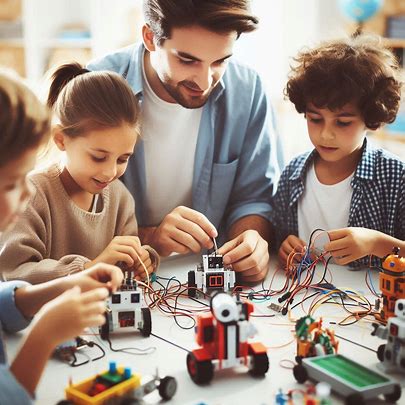 Children absorb information faster when they’re having fun. That’s a fact backed by both experience and research. While effective for some, traditional teaching methods often fail to capture young learners’ interest. That’s where entertainment comes in — not just as a distraction but a powerful teaching tool.
Children absorb information faster when they’re having fun. That’s a fact backed by both experience and research. While effective for some, traditional teaching methods often fail to capture young learners’ interest. That’s where entertainment comes in — not just as a distraction but a powerful teaching tool.
Storytelling, interactive games, and play-based learning are transforming how educators introduce STEM (Science, Technology, Engineering, and Math) concepts. By turning lessons into experiences, educators are creating environments where curiosity thrives. One standout example is how programs are weaving fun into learning to build STEM science literacy early on. Children begin associating STEM subjects with excitement and creativity rather than pressure and complexity (source: https://celebratesel.com/stem-science-literacy/).
Why Storytelling Works
Stories have always been part of human learning. Long before textbooks, we passed knowledge through tales. When STEM is taught through storytelling, abstract ideas become relatable. For instance, a child might better understand how gravity works when told about the journey of a curious alien visiting Earth. Characters, plots, and conflict pull students in and help them visualize complex topics.
Educators often use story-based scenarios in coding or science challenges. Instead of giving instructions like “calculate velocity,” they might say, “help the astronaut reach Mars safely by solving this problem.” That small shift from instruction to adventure makes a world of difference.
Interactive Learning in Action
Interactive activities bring STEM to life. Hands-on experiments, digital simulations, and games turn passive learning into active discovery. Children learn better when they’re part of the process. It’s the difference between watching someone build a volcano and building it yourself. That sense of achievement helps lessons stick.
Technology plays a big role here. Apps and learning platforms allow students to explore coding, design, and science playfully. Robotics kits like LEGO Mindstorms or coding games like Scratch combine fun with real-world skill-building. They challenge young learners while entertaining them at the same time.
Benefits of Entertaining STEM Education
When fun is part of learning, students stay engaged longer. This boosts their attention spans and encourages persistence — key traits for STEM success. It also breaks down fear. Many kids find STEM subjects intimidating. But if their first experience with math or science feels like a game, they’re more likely to explore it further.
Entertainment also sparks collaboration. Group projects using storytelling or game design foster teamwork. Kids often brainstorm, solve problems, and share ideas without realizing they’re doing schoolwork. That kind of engagement is priceless.
Real-World Classroom Examples
Across the globe, classrooms are embracing this method. Teachers are turning science into theater productions. They’re using digital tools to create STEM adventures. In one school, students coded animations that told environmental stories. Another used Minecraft to teach geometry and physics. These aren’t just gimmicks. They’re effective strategies backed by better test scores and improved classroom behavior.
Libraries and museums are also adopting this trend. Children’s science exhibits now include role-playing games, interactive walls, and storytelling stations. The goal? Make STEM feel less like school and more like discovery.
READ ALSO: Online Resources in Learning Musical Theory
How Parents Can Join In
Learning doesn’t end in the classroom. Parents can use storytelling and interactive games at home, too. Reading science-themed storybooks, building with blocks, or exploring fun apps can keep curiosity alive. Even simple kitchen experiments — making slime or baking soda volcanoes — make science tangible and fun.
Encouraging questions is key. “Why do you think that happened?” or “How can we fix it?” turns any activity into a learning moment. The more kids feel heard and engaged, the more they’ll enjoy exploring STEM subjects.
Conclusion
Entertainment isn’t a distraction from learning — it’s a gateway to deeper understanding. We’re not just teaching facts by blending stories, games, and interactive play into STEM education. We’re shaping curious, creative thinkers who are excited about the world around them. And that’s the kind of future every child deserves.

